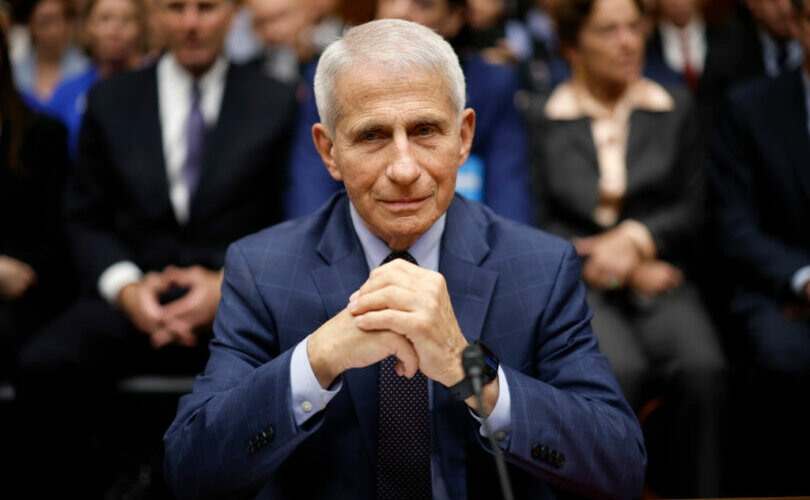Alberta
Alberta company donating structure to AHS to expand hospital in Calgary for COVID-19 patients

From The Province of Alberta
Expanding pandemic patient capacity in Calgary
A temporary expansion to the Peter Lougheed Centre in Calgary will help one of Alberta’s busiest hospitals meet patient needs during the COVID-19 pandemic.
Alberta-based Sprung Structures has donated a temporary structure to Alberta Health Services (AHS) that will add up to 6,000 square feet of treatment space. This will create about 100 more care spaces for Calgary-area patients.
The value of the donation from Sprung Structures is $235,000.
There have been 835 cases of COVID-19 identified in the Calgary zone as of April 8. This represents 61 per cent of all the cases in Alberta.
“Our health system is working around-the-clock to respond to COVID-19. This donation to AHS and the people of Alberta will significantly expand capacity and, ultimately, help save lives. I would like to extend my heartfelt appreciation to Sprung Structures on behalf of all Albertans.”
“This donation will greatly assist AHS with our planning and increase our capacity as we address the COVID-19 pandemic. This new space will provide more options for treatment beyond the scope of our existing facilities as our teams continue to care for Albertans and battle this pandemic. On behalf of AHS, I’d like to say how appreciative we all are for the generosity of Phil and Tim Sprung, and would like to extend our gratitude to Sprung Structures.”
“When the province needs help in a time of crisis, we want to step up and do our part. We hope the donation of this structure will help ease capacity pressures on the health-care system and give our province’s health-care providers the space they need to care for Albertans during this global pandemic.”
Planning and implementation teams from the Alberta government, AHS, and local officials are working with Sprung Structures and its partners to fast-track this initiative. The structure will be located in the parking lot next to the Peter Lougheed Centre.
AHS will invest up to $3 million to turn the structure into a site for safe, high-quality health-care delivery that meets all standards for infection prevention and control.
Quick facts
- The Sprung structure is 70 metres by 105 metres and will add up to 557 square metres (6,000 square feet) of treatment space, which will also include room for staff and physician support space and patient washrooms.
- The structure is a tensioned membrane building solution combining an aluminum substructure with highly tensioned membrane panels.
- Family-owned and operated since 1887, the Sprung Group of Companies has been manufacturing innovative building solutions for 133 years. Sprung has more than 12,000 structures in 100 countries around the world.
- AHS is working on other measures to increase the number of acute care beds in the Calgary zone and throughout the province in response to a surge of demand caused by COVID-19. These measures include postponement of all elective surgeries and procedures, and identifying non-clinical spaces in AHS facilities that can be adapted for patient care.
- In all, AHS is ensuring that more than 3,000 acute care and intensive care spaces are available for patients with COVID-19.
Alberta has a comprehensive response to COVID-19 including measures to enhance social distancing, screening and testing. Financial supports are helping Alberta families and businesses.
Alberta
Alberta takes big step towards shorter wait times and higher quality health care

From the Fraser Institute
On Monday, the Smith government announced that beginning next year it will change the way it funds surgeries in Alberta. This is a big step towards unlocking the ability of Alberta’s health-care system to provide more, better and faster services for the same or possibly fewer dollars.
To understand the significance of this change, you must understand the consequences of the current (and outdated) approach.
Currently, the Alberta government pays a lump sum of money to hospitals each year. Consequently, hospitals perceive patients as a drain on their budgets. From the hospital’s perspective, there’s little financial incentive to serve more patients, operate more efficiently and provide superior quality services.
Consider what would happen if your local grocery store received a giant bag of money each year to feed people. The number of items would quickly decline to whatever was most convenient for the store to provide. (Have a favourite cereal? Too bad.) Store hours would become less convenient for customers, alongside a general decline in overall service. This type of grocery store, like an Alberta hospital, is actually financially better off (that is, it saves money) if you go elsewhere.
The Smith government plans to flip this entire system on its head, to the benefit of patients and taxpayers. Instead of handing out bags of money each year to providers, the new system—known as “activity-based funding”—will pay health-care providers for each patient they treat, based on the patient’s particular condition and important factors that may add complexity or cost to their care.
This turns patients from a drain on budgets into a source of additional revenue. The result, as has been demonstrated in other universal health-care systems worldwide, is more services delivered using existing health-care infrastructure, lower wait times, improved quality of care, improved access to medical technologies, and less waste.
In other words, Albertans will receive far better value from their health-care system, which is currently among the most expensive in the world. And relief can’t come soon enough—for example, last year in Alberta the median wait time for orthopedic surgeries including hip and knee replacements was 66.8 weeks.
The naysayers argue this approach will undermine the province’s universal system and hurt patients. But by allowing a spectrum of providers to compete for the delivery of quality care, Alberta will follow the lead of other more successful universal health-care systems in countries such as Australia, Germany, the Netherlands and Switzerland and create greater accountability for hospitals and other health-care providers. Taxpayers will get a much better picture of what they’re paying for and how much they pay.
Again, Alberta is not exploring an untested policy. Almost every other developed country with universal health care uses some form of “activity-based funding” for hospital and surgical care. And remember, we already spend more on health care than our counterparts in nearly all of these countries yet endure longer wait times and poorer access to services generally, in part because of how we pay for surgical care.
While the devil is always in the details, and while it’s still possible for the Alberta government to get this wrong, Monday’s announcement is a big step in the right direction. A funding model that puts patients first will get Albertans more of the high-quality health care they already pay for in a timelier fashion. And provide to other provinces an example of bold health-care reform.
Alberta
Alberta’s embrace of activity-based funding is great news for patients

 From the Montreal Economic Institute
From the Montreal Economic Institute
Alberta’s move to fund acute care services through activity-based funding follows best practices internationally, points out an MEI researcher following an announcement made by Premier Danielle Smith earlier today.
“For too long, the way hospitals were funded in Alberta incentivized treating fewer patients, contributing to our long wait times,” explains Krystle Wittevrongel, director of research at the MEI. “International experience has shown that, with the proper funding models in place, health systems become more efficient to the benefit of patients.”
Currently, Alberta’s hospitals are financed under a system called “global budgeting.” This involves allocating a pre-set amount of funding to pay for a specific number of services based on previous years’ budgets.
Under the government’s newly proposed funding system, hospitals receive a fixed payment for each treatment delivered.
An Economic Note published by the MEI last year showed that Quebec’s gradual adoption of activity-based funding led to higher productivity and lower costs in the province’s health system.
Notably, the province observed that the per-procedure cost of MRIs fell by four per cent as the number of procedures performed increased by 22 per cent.
In the radiology and oncology sector, it observed productivity increases of 26 per cent while procedure costs decreased by seven per cent.
“Being able to perform more surgeries, at lower costs, and within shorter timelines is exactly what Alberta’s patients need, and Premier Smith understands that,” continued Mrs. Wittevrongel. “Today’s announcement is a good first step, and we look forward to seeing a successful roll-out once appropriate funding levels per procedure are set.”
The governments expects to roll-out this new funding model for select procedures starting in 2026.
* * *
The MEI is an independent public policy think tank with offices in Montreal, Ottawa, and Calgary. Through its publications, media appearances, and advisory services to policymakers, the MEI stimulates public policy debate and reforms based on sound economics and entrepreneurship.
-

 2025 Federal Election2 days ago
2025 Federal Election2 days agoRCMP memo warns of Chinese interference on Canadian university campuses to affect election
-

 2025 Federal Election1 day ago
2025 Federal Election1 day agoResearchers Link China’s Intelligence and Elite Influence Arms to B.C. Government, Liberal Party, and Trudeau-Appointed Senator
-

 COVID-1917 hours ago
COVID-1917 hours agoCDC Vaccine Safety Director May Have Destroyed Records, Says Sen. Ron Johnson
-

 COVID-191 day ago
COVID-191 day agoFauci, top COVID officials have criminal referral requests filed against them in 7 states
-

 Business2 days ago
Business2 days agoScott Bessent Says Trump’s Goal Was Always To Get Trading Partners To Table After Major Pause Announcement
-

 International1 day ago
International1 day agoTrump White House will ignore reporter emails that include ‘preferred pronouns’ in signature
-

 COVID-192 days ago
COVID-192 days agoBiden Admin concealed report on earliest COVID cases from 2019
-

 2025 Federal Election1 day ago
2025 Federal Election1 day agoTwo Canadian police unions endorse Pierre Poilievre for PM










